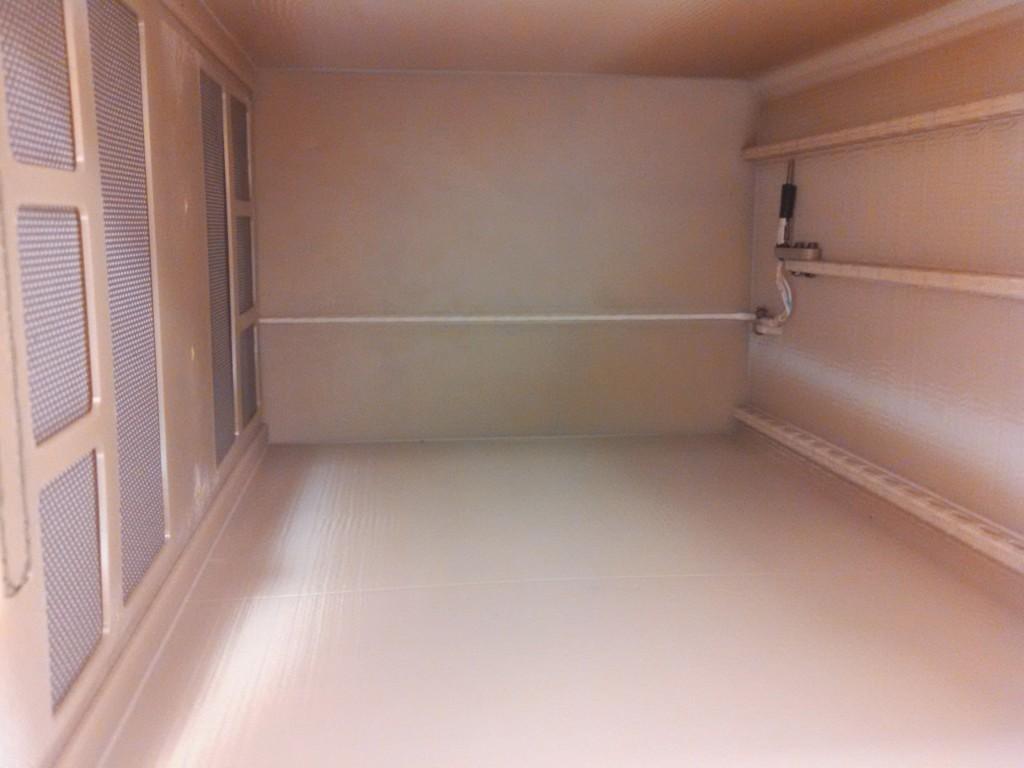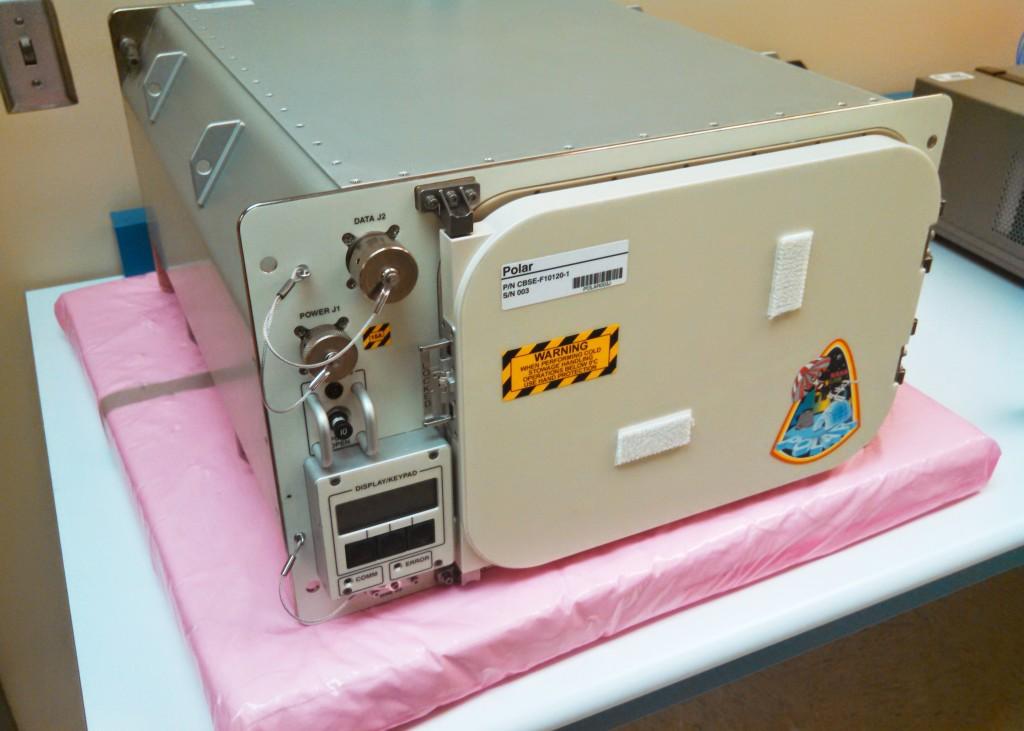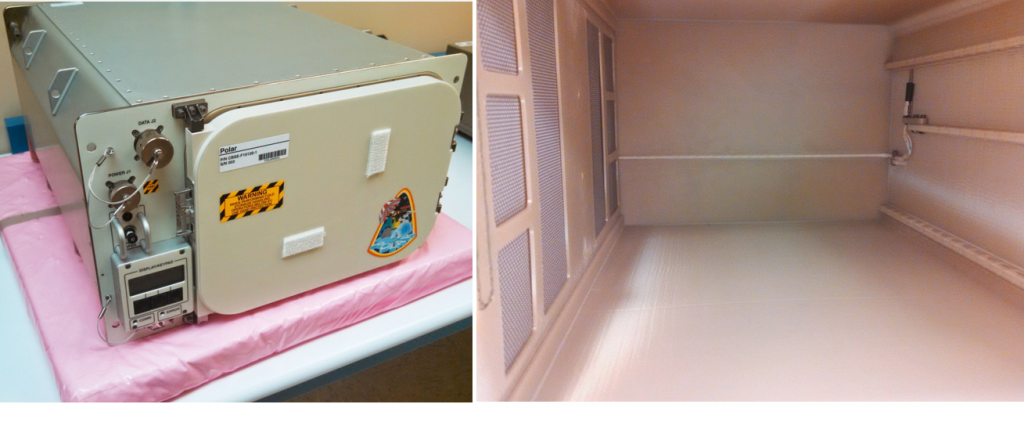Space Station’s Extreme Temp Freezer Gets a 3D Printed Liner
 The International Space Station made 3D printing news late last year when it got its own 3D printer. Now it’s back in the news as it will soon make room for Polar, a new extreme temperature freezer that chills to -80⁰C. The initial role of the freezer will be the transportation and processing of samples for experiments to the ISS in coordination with NASA. Eventually, Polar will remain on the Space Station and will be joined by several other low-temperature freezers — the goal is as many as 14.
The International Space Station made 3D printing news late last year when it got its own 3D printer. Now it’s back in the news as it will soon make room for Polar, a new extreme temperature freezer that chills to -80⁰C. The initial role of the freezer will be the transportation and processing of samples for experiments to the ISS in coordination with NASA. Eventually, Polar will remain on the Space Station and will be joined by several other low-temperature freezers — the goal is as many as 14.
The samples being stored in the freezer are largely biological. Before your imagination heads in the direction of alien life forms running amok on the ISS or hitching a ride back to Earth via a test tube in a low-temperature freezer, note that the majority of the specimens are blood, urine, and cells from space station staff for a study on the effects of zero gravity on human cells over time as well as other experiments.
The freezer was developed by the University of Alabama at Birmingham (UAB) Center for Biophysical Sciences and Engineering (CBSE). Because every inch of space on the ISS is precious, the refrigerator needed to be compact — there were very strict volume requirements — yet have a reasonably expansive interior storage capacity. Using more conventional materials to create the liner for the interior of the storage unit proved quite problematic for UAB CBSE, however. The CBSE, which began its development of storage and temperature control units that could cool to -20⁰C, has since developed not only the Polar but also the Glacier unit, which can cool to an almost inconceivable -160°C.
The CBSE team tried using PEEK (polyether ether ketone), a colorless, organic thermoplastic polymer to manufacture the liner for Polar. The flat machined pieces of the material when joined together didn’t fit properly in the curved inner unit of the refrigerator nor did thermoformed PEEK due to inconsistencies in the thickness of the fused sheets, which also necessitated the use of brackets to keep them in place.
Space is at a premium, so the CBSE staff turned to 3D printing. They were already using 3D printing with Fused Deposition Modeling (FDM), a material that is commonly used for aerospace ducting, so they began researching the feasibility of 3D printing for Polar’s interior lining.
The main impediment to creating an acceptable liner via 3D printing seemed to be size. The CBSE engineers wanted the liner to consist of a single piece and they weren’t sure that a 3D printer could manage that task. After doing some brainstorming, CBSE turned once again to Solid Concepts, Inc. (now Stratasys Direct), with whom they’d worked in the 3D printing of the ducting. Solid Concepts could provide a 3D printer with a large enough build volume — a build platform of 36” x 24” x 36” — so they had a solution!
After figuring out how to create the proper 3D model, the UAB CBSE team went to work using FDM, which creates objects by laying down via a precise, computer-guided nozzle layer after layer of thermoplastics that are heated to a specific temperature. The specific FDM used by the CBSE for Polar’s lining shell was ULTEM 9085, which is known for its resistance to heat and chemicals.
Polar’s new liner has been put through the rigors by the CBSE team. One of the engineers at CBSE described the testing process:
“We dropped [the liner] from certain heights, bent it — generally made sure it wouldn’t shatter, chip or break. Once the first unit was built, it also had to undergo vibration testing on a shake table that simulated what it would see during launches…”
They’re confident they’ve found the best solution for their extreme temperature storage containers. As has often been the case, space exploration has driven technological development and we imagine this breakthrough with CBSE’s extreme temperature storage units and 3D printing will inspire comparable innovative efforts.
Let us know what you think in the 3D Printed Liner for ISS’ Polar Unit forum thread over at 3DPB.com.
Subscribe to Our Email Newsletter
Stay up-to-date on all the latest news from the 3D printing industry and receive information and offers from third party vendors.
Print Services
You May Also Like
RAPID 2025: Stratasys & trinckle Announce Strategic Software Partnership
News continues to flood in from last week’s RAPID+TCT 2025, including a new partnership between AM market leader Stratasys and Berlin-based software company trinckle. By automating important steps in fixture...
RAPID TCT 2025: Spring in the Paris of the Midwest
I’m going to go out on a limb here and say that whomever coined the phrase Detroit: Paris of the Midwest, had not spent a lot of time in Paris...
3D Printing Financials: 3D Systems Looks to Bounce Back in 2025
After a challenging year for the industry, 3D Systems (NYSE: DDD) ended 2024 with results pointing to a reset, laying the groundwork for future profitability. The company didn’t post strong...
Printing Money Episode 27: Q4 2024 Public 3D Printing Earnings Review with Troy Jensen, Cantor Fitzgerald
Q2 2025 has already begun, but public markets reporting has only just finished with Q4 2024. To tie a bow on Q4 2024, we are thankful to have Troy Jensen...




























